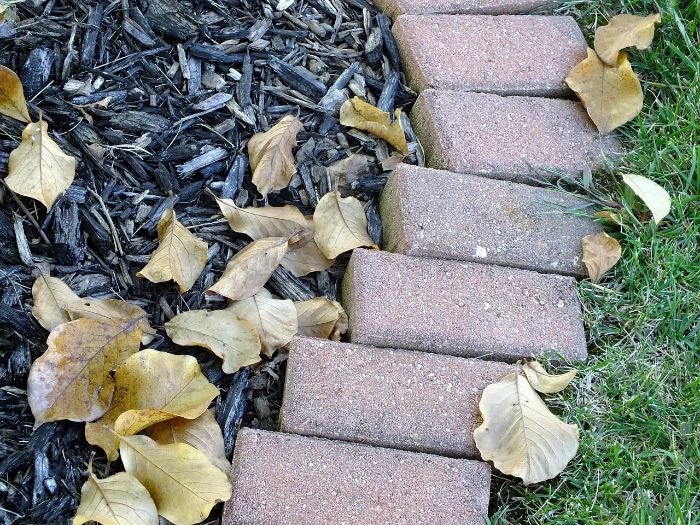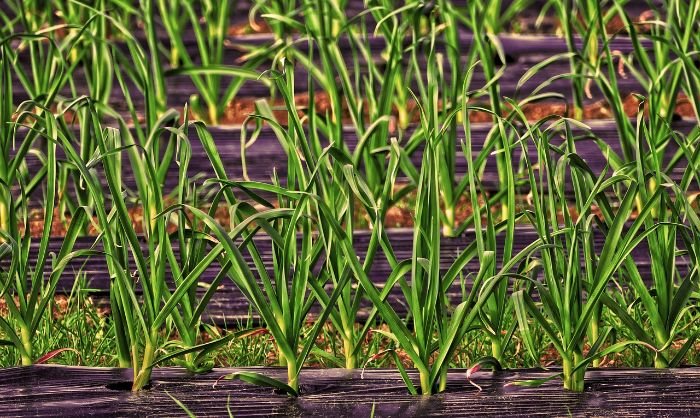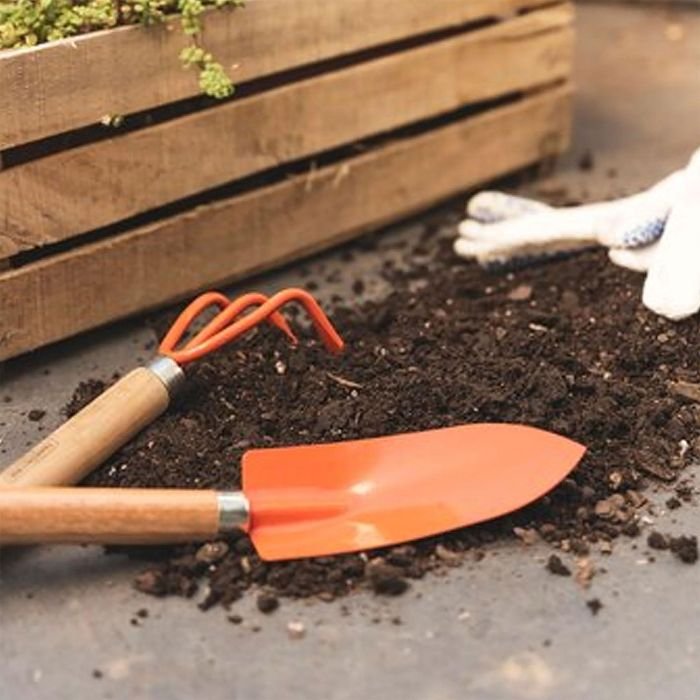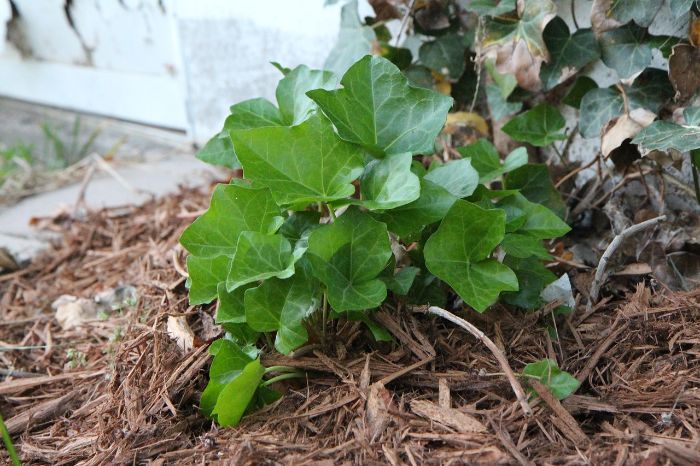Mulching is a foundational gardening practice that improves soil quality, suppresses weeds, and stabilizes moisture levels. By applying a consistent layer of organic or inorganic material to the soil surface, gardeners can enhance plant growth, reduce maintenance, and improve overall garden resilience.
Both organic and inorganic mulches serve distinct purposes in garden management. Organic mulches improve soil fertility over time, while inorganic options offer longer-lasting weed suppression and minimal breakdown. Selecting the right mulch type enhances not only plant performance but also the garden’s aesthetic value.
A well-mulched garden not only looks refined but also performs more efficiently. Understanding how mulch interacts with soil and plant systems allows gardeners to improve fertility, minimize weed pressure, and create more favorable conditions for plant development.
Key Takeaways
- Mulching stabilizes soil moisture, supports nutrient cycling, and improves soil structure over time.
- Both organic and inorganic mulches reduce weed emergence when applied correctly.
- Proper mulch application promotes vigorous, low-maintenance plant growth.
- Selecting mulch based on soil, climate, and plant needs improves overall garden performance.
- Sustainable mulching practices contribute to long-term soil health and ecosystem balance.
Table of Contents
Understanding Mulching – Benefits for Soil and Plant Health
Mulching plays a central role in both plant development and long-term soil preservation, helping gardeners conserve moisture and reduce watering needs throughout the growing season. By regulating temperature, moisture, and nutrient availability, mulch contributes to healthier plant roots and reduces environmental stress on the growing area. Understanding how different mulches interact with soil conditions allows for better-informed decisions that support overall garden performance.
The Role of Mulch – Improving Soil Structure and Nutrient Retention
Mulch contributes to soil health by preventing erosion, enhancing nutrient retention, and encouraging biological activity. Organic materials such as bark chips, straw, or shredded leaves gradually decompose, enriching the soil with essential macro- and micronutrients. Over time, this process improves soil texture and supports more resilient root systems.
Mulching for Moisture Retention – Conserving Water and Supporting Root Function
Mulch helps maintain consistent soil moisture by reducing surface evaporation and buffering temperature fluctuations. This is particularly valuable in arid climates or during extended dry periods, where water conservation is critical. Consistent hydration supports root absorption and reduces plant stress, improving overall growth stability.
Mulch and Weed Control – Blocking Light and Reducing Germination
Mulch effectively suppresses weed growth by limiting light penetration and creating a physical barrier that reduces seed germination. A consistent mulch layer deprives weed seeds of the conditions they need to sprout, lowering the need for manual weeding techniques and reducing competition for water and nutrients.
Types of Mulches – Organic and Inorganic Options for Every Garden
Understanding the different types of mulch is essential for selecting the most effective option based on soil conditions, climate, and plant needs. Both organic and inorganic mulches support soil health and weed control, but they differ significantly in lifespan, nutrient contribution, and visual appearance.
Organic Mulches – Biodegradable Materials That Feed the Soil
Organic mulches include materials such as wood chips, shredded bark, straw, compost, and fallen leaves. As they decompose, they release organic matter that builds soil health, improve its texture, and stimulate microbial activity. These materials also insulate the soil, retain moisture, and suppress weeds naturally. Over time, organic mulches enhance soil fertility and contribute to a balanced garden ecosystem.
Inorganic Mulches – Durable Coverage with Minimal Maintenance
Inorganic mulches such as gravel, rubber mulch, landscape fabric, and plastic sheeting do not decompose or enrich the soil. However, they provide long-term weed suppression, require minimal upkeep, and help with temperature regulation in some climates. These materials are often used in permanent beds, walkways, or decorative garden spaces where longevity and structure are priorities.
Choosing the Right Mulch – Matching Material to Soil, Climate, and Plants
Selecting the most effective mulch requires evaluating your garden’s specific conditions, including soil composition, local climate patterns, and the needs of your plant varieties. Each of these elements influences how mulch performs in terms of water retention, weed suppression, and nutrient contribution.

Soil Type – Adapting Mulch to Sandy, Clay, or Loamy Conditions
Different soil types interact with mulch in unique ways. Sandy soils benefit from dense organic mulches like compost or shredded bark that retain moisture and reduce leaching. In contrast, clay soils respond better to coarse mulches such as straw or wood chips, which promote airflow and reduce compaction. Loamy soils can support most mulch types but still require proper thickness to balance moisture retention and evaporation.
Choosing the right mulch for your soil type makes a big difference.
Climate Factors – Selecting Mulch for Wet or Dry Conditions
Local climate has a direct impact on mulch performance. In regions with frequent rainfall, organic mulches such as leaf litter, straw, or bark are ideal, as they slowly decompose and enhance soil fertility. In arid environments, opt for denser mulches like composted bark or gravel that reduce evaporation and insulate the soil. Adjusting mulch choice based on seasonal rainfall and temperature helps maintain consistent growing conditions.
Plant Requirements – Tailoring Mulch to Moisture and Root Preferences
Different plants respond uniquely to mulch based on their root systems and water requirements. Moisture-loving crops such as tomatoes or leafy greens thrive under thick layers of compost or leaf mulch, which maintain high humidity and support nutrient cycling. Drought-tolerant species like lavender or rosemary benefit from inorganic mulches or lighter organic options that suppress weeds without retaining excess moisture around the roots.

Applying Mulch Effectively – Preparation, Technique, and Common Errors
Effective mulch application begins with proper soil preparation, follows specific layering techniques, and avoids common missteps that can hinder plant growth. These practices not only support healthier plants but also reduce long-term maintenance and improve soil function season after season.
Soil Preparation – Creating a Clean, Nutrient-Rich Base
Begin by clearing the area of weeds, stones, and decaying plant matter, all of which can interfere with nutrient availability and water retention. If needed, incorporate compost or aged manure to improve soil structure and fertility. A well-prepared soil base maximizes the moisture-retaining and weed-suppressing benefits of mulch.
Mulching Techniques – Depth, Placement, and Root Protection
Apply mulch in a layer between 2 and 4 inches thick, adjusting based on mulch type and soil condition. Keep mulch at least an inch away from plant stems to prevent rot and discourage pests. Avoid compacting the mulch layer, as proper aeration improves water infiltration and microbial activity.
Mistakes to Avoid – Overmulching, Soil Contact, and Neglect
Common mulching errors include applying mulch too thickly, which can suffocate roots and promote fungal growth, and placing mulch directly against stems, leading to rot and pest issues. Additionally, leaving exposed soil between mulch areas invites weed invasion. Awareness of these mistakes ensures mulch performs as intended.
To prolong mulch effectiveness, top up organic layers every growing season as they decompose. In high-traffic areas, consider edging to prevent mulch displacement by wind or water. Regular inspection helps maintain optimal coverage and prevents gaps that allow weeds to emerge.
Long-term Benefits of Mulching – Soil Fertility, Microbial Life, and Erosion Control
According to the USDA mulching guidelines, mulching offers multiple benefits, including conserving water, protecting soil from erosion, suppressing weeds, and moderating temperature extremes.
Over time, consistent mulching improves key soil functions, supports beneficial microbial life, and strengthens plants’ ability to absorb nutrients and withstand environmental stress. These cumulative benefits result in more productive, resilient gardens season after season.

Enhancing Soil Fertility
As organic mulch decomposes, it gradually releases nitrogen, potassium, and trace minerals back into the soil. This slow nutrient input builds long-term fertility, improves soil texture, and increases its capacity to hold moisture. Consistent mulching also supports nutrient cycling, reducing the need for synthetic fertilizers.
Adding more organic stuff means plants get the nutrients they need. This makes your garden healthier for a long time.
Promoting Beneficial Microbial Activity
Decomposing mulch provides a steady food source for beneficial soil microbes such as bacteria, fungi, and actinomycetes. These organisms play a critical role in nutrient cycling, organic matter breakdown, and disease suppression. A biologically active soil environment improves root health and overall plant vigor.
This leads to a mix of microbes that makes soil better. More microbes mean healthier plants and stronger gardens.
Reducing Soil Erosion
A stable mulch layer acts as a protective shield, protecting your soil from erosion caused by rain and wind. This prevents the loss of topsoil and protects valuable organic matter near the surface. Mulch also slows surface runoff, encouraging water infiltration and preserving the soil’s structural integrity.
It also keeps soil moist, stopping water from running off. This protects the soil’s structure over time.
Sustainable Mulching Practices – Eco-Friendly Materials and Seasonal Planning
Sustainable mulching emphasizes long-term soil health, waste reduction, and lower environmental impact. By integrating recycled or locally sourced materials and adjusting strategies by season, gardeners can reduce costs, improve efficiency, and support ecological balance in their outdoor spaces.
Using Recycled Materials for Mulching
Using recycled mulch materials such as shredded leaves, pruned branches, grass clippings, or untreated wood chips reduces organic waste and contributes to a closed-loop garden system. These materials enrich the soil as they decompose, while sourcing them locally minimizes transportation-related emissions. Gardeners who use site-generated mulch also reduce costs and contribute to sustainable land stewardship practices.
Seasonal Mulching Strategies
Adjusting mulching techniques by season improves garden performance throughout the year. In spring, applying mulch helps retain early-season moisture and prevents weed germination during active growth. In summer, thicker layers reduce heat stress and evaporation. Fall is ideal for adding leaf mulch or compost, which decomposes over winter to enrich the soil. Winter mulching insulates roots in colder climates and protects perennials from frost heave.
To maintain sustainability, avoid dyed or synthetic mulches that may leach chemicals into the soil. Opt for untreated, natural materials that decompose safely and benefit soil life. Whenever possible, compost yard waste and repurpose it as mulch to close the nutrient cycle within your garden system.
Conclusion
Mulching is more than just a gardening habit – it’s a strategic tool for improving soil structure, reducing erosion, conserving water, and supporting long-term plant health. Whether using organic materials that break down and feed the soil or inorganic options for low-maintenance landscapes, the right mulch enhances both function and appearance.
By understanding how different mulches interact with soil, climate, and plant types, you can make more informed decisions that improve growing conditions year-round. Effective mulching reduces the need for synthetic inputs, supports microbial diversity, and strengthens your garden’s resilience against stress.
Adopt mulching as part of your long-term garden strategy. Start with what you have, observe how your garden responds, and adjust seasonally. The results – healthier soil, fewer weeds, and more vigorous plants, will speak for themselves.
FAQ
What is mulching?
Mulching is when you cover the soil with something to help it. It keeps the soil healthy. It does this by keeping moisture in, stopping weeds, and adding nutrients.
What are the benefits of using organic mulch?
Organic mulches like wood chips and straw help the soil over time. They make the soil richer by adding important nutrients. They also keep moisture in and make the soil better.
How does mulching help with weed control?
Mulch stops weeds from getting sunlight. This means they can’t grow and compete with your plants for water and nutrients.
What factors should be considered when selecting mulch?
Think about the soil type, the weather, the plants, and what you need for your garden. This helps pick the best mulch for keeping moisture in and weeds out.
What are common mistakes when applying mulch?
Don’t put too much mulch, as it can harm your plants. Also, make sure to spread it evenly. This stops weeds from growing in bare spots.
Can mulching improve soil fertility?
Yes, organic mulches make the soil richer as they break down. This helps good microbes in the soil, which is key for healthy soil.
What are sustainable mulching practices?
Using local, recycled stuff like leaves and wood chips is good. Also, mulching at the right times helps plants and the planet.
How does mulch affect soil erosion?
Mulch acts as a shield against rain and wind. It keeps the topsoil in place, saving nutrients and keeping the soil structure strong.










